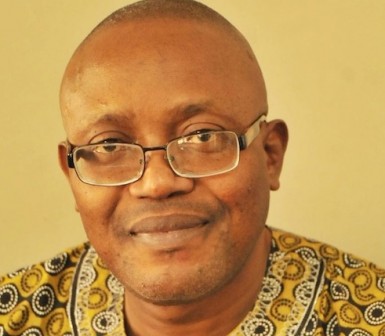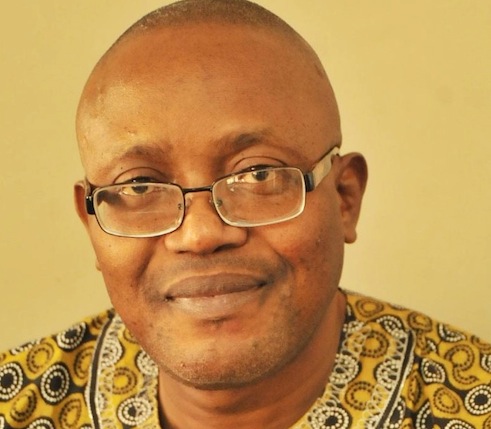17th March, 2019

By Owei Lakemfa
This tragedy is global and the issue now is not who to blame, but to understand why and how the crash occurred and how to get past what at first glance, seems a failed wrestle between man and computer.
Nigerian intellectual star, Pius Adesanmi, shone brightly across the globe. The author of Naija No Dey Carry Last, a collection of essays and winner of the Penguin Prize for African Non-Fiction Writing in 2010, was in high demand. He was director of the Institute of African Studies, Carleton University in Ottawa, Canada, when on Sunday, March 10, in Addis Ababa, he boarded the Ethiopian Airlines Flight ET 302, a new Boeing 737 MAX 8 aircraft for Nairobi.
Our mother continent had sought his expertise at the conference of the African Union’s Economic, Social and Cultural Council (ECOSOCC) in Nairobi. The fifteen-year old body is one of the AU’s attempts to transform itself from a union of heads of state, to a union of the African people. ECOSOCC is structured to mainstream civil societies and labour unions into the AU system. The body is charged with transforming the AU’s principles and policies into concrete programmes. It is also charged with contributing to the promotion of human rights, the rule of law, good governance, democratic principles, gender equality and child rights in the continent. Which other tribe of people will the AU seek, but committed people of intellect like our dear Professor Adesanmi. But tragically, he never made it to Nairobi.
The aircraft conveying him and 156 earthly souls, took off at 8:38 a.m. faltered, and in six minutes returned to land, a bowl of fire.
Initially, we did not realise that Nigeria had lost one of its brightest because Canada, in realising his huge intellectual capacity and potentials, had made Adesanmi its citizen; so he was flying on a Canadian passport. His death is as devastating as that of another very brilliant Nigerian intellectual, Tajudeen Abdul-Raheem, who in 2009, was based in Nairobi as deputy director, Africa Office of the UN Millennium Campaign. He was to catch an early morning flight at the Jomo Kenyatta International Airport when we lost him in a road accident on the Mombasa Highway, Nairobi.
In this air crash, we also did not realise that we lost our bright Ambassador Abiodun Oluremi Bashua, a 1976 Foreign Service intake who had served in our embassies around the world, including Vienna, Abidjan and Tehran. He also served as secretary to the Conference of the Parties to the United Nations (UN) Framework Convention on Climate Change. The UN had realised his potentials and retained him. So he was flying on a UN passport.
The UN lost some two score persons in this crash, not just because the dependable Ethiopian Airlines is one of the best and is known as the “UN Shuttle” on that route, but also for the fact that its environment arm, the United Nations Environment Programme (UNEP) was holding a conference in Nairobi the next day.
Adesanmi was not the only bright African headed for the AU ECOSOCC Conference. Karim Saafi, 38, a French-Tunisian civil society activist and co-chair of the African Diaspora Youth Forum, was also headed for the conference. He was traveling on a French passport.
The aircraft lifted an assemblage that looked like the UN itself as it had on board passengers of more than 35 nationalities. They included 32 Kenyans, 18 Canadians, nine Ethiopians and nine Britons. Italy, United States and China had eight citizens each and France, seven. As it turned out, Nigeria had two.
Adesanmi was not the only bright African headed for the AU ECOSOCC Conference. Karim Saafi, 38, a French-Tunisian civil society activist and co-chair of the African Diaspora Youth Forum, was also headed for the conference. He was traveling on a French passport.
So how do we mourn so many? People with bright futures whose expertise the world needed? How do we console their loved ones…except in some cases, some of those loved ones were with them when the aircraft went down.
Six members of the Canadian Dixit-Vaidya family were on a family holiday to Kenya, where one of them, Kosha Vaidya, 37, was born. She was travelling with her husband, Prerit Dixit, 45; two daughters, Ashka, 14 and Anushka, 13; and parents Pannagesh Vaidya, 71, and Hansini Vaidya, 63. They all died in the crash.
Anton Hrnko, a Slovakian law maker is left to mourn his wife, Blanka; daughter, Michala; and son, Martin. Sahra Hassan Said and her son, Nasrudin Abdulkadir, both dual Somali-British nationals went down with the plane as did a Russian couple, Yekaterina Polyakova and her husband, Alexander Polyakov. Another couple, Jared Mwazo Babu, who founded a Nairobi-based marketing agency, and his wife, Mercy Ndivo, left behind a 15-month-old daughter.
The group president of the Italian based humanitarian organisation, Africa Tremila, Carlo Spini and his wife, Gabriella Viggiani, and its Treasurer, Matteo Ravasio, also died.
Tamirat Mulu Demessie, who served as child protection in emergencies technical adviser of the Save the Children was on board. So also was Sam Pegram, 25, a British aid worker and intern with the Norwegian Refugee Council, based in Geneva.
Kenyan law student at Georgetown University, Washington DC., Cedric Asiavugwa, who had worked with groups helping refugees in Zimbabwe, Kenya, Uganda and Tanzania was on his way to Nairobi after the death of his fiancee’s mother. He became one more person to mourn.
Hussein Swaleh, a former secretary general of the Football Kenya Federation was the match commissioner in the African Champions League game between Ismaili and TP Mazembe Englebert, in Egypt on Friday. He never made it back to Nairobi. Anthony Ngare, 49, a journalist, was deputy director of Communications at United Nations Education, Scientific and Cultural organisation (UNESCO) in Nairobi. He was returning from a UN conference in Paris. He died, as did Sebastiano Tusa, 66, an Italian underwater archaeologist who was flying to Kenya to work on a project with UNESCO.
Kenyan law student at Georgetown University, Washington DC., Cedric Asiavugwa, who had worked with groups helping refugees in Zimbabwe, Kenya, Uganda and Tanzania was on his way to Nairobi after the death of his fiancee’s mother. He became one more person to mourn.
Joanna Toole, a British 36-year-old environmental campaigner working for the fisheries and aquaculture department of the UN Food and Agriculture Organisation (FAO) was travelling to attend the UN Environment Assembly. Also travelling for the same conference, was Danielle Moore, 24, a member of the clean ocean advocacy group, Ocean Wise. Both did not make it to the conference.
Joseph Waithaka, 55, a Kenyan and British who had relocated to Kenya, on Saturday, went to see his son, Ben Kuria in Croydon, South London, before heading to Addis Ababa for his connecting flight to Nairobi. Of course, he never saw Kenya again. Kuria recalled: “I gave him a hug and shook his hand, because in my culture it’s more about the handshake than it is about the hug.”
Sara Gebre Michael, the lead cabin attendant left for work, leaving behind her husband and three children who are left to mourn her. Senior Captain Yared Mulugeta Gatechew, the main pilot had joined the Ethiopian Airline in November 2007. This turned out to be his last flight.
This tragedy is global and the issue now is not who to blame, but to understand why and how the crash occurred and how to get past what at first glance, seems a failed wrestle between man and computer.
Owei Lakemfa, a former secretary general of African workers, is a human rights activist, journalist and author.



